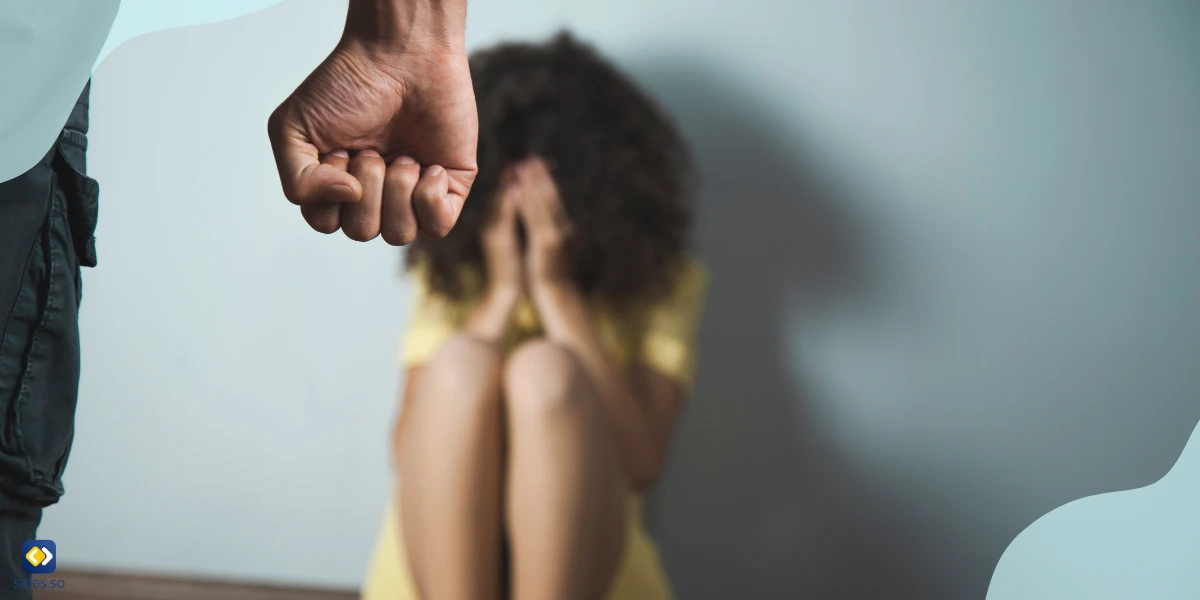Physical abuse is described as one person’s intentionally aggressive or violent behavior toward another that has harmful results. To help children suffering from physical abuse, it’s essential to recognize it. Teachers spend a great amount of time with their students. Therefore, teachers are in a good position to be extra watchful for physical symptoms of abuse like cuts, bruises, burns, grip markings, black eyes, and an unusual pattern of injury. How fast teachers notice something’s wrong with their student’s well-being, can help early detection and prevention of future domestic violence. The purpose of this blog is for you to recognize signs of physical abuse. Knowing if someone is in danger is a key step toward early intervention and recovery.
Download and Start Your Free Trial of the Safes Parental Control App
Physical Abuse: Definition and Types
Physical abuse is any intentional act causing injury, trauma, bodily harm, or other physical suffering to another person by bodily contact. Different examples of physical abuse can include punching, kicking, choking, and pounding. Other types are scratching and biting; shaking or suffocating; scorching or burning; pulling someone’s hair; spitting or throwing objects. Also, the use of restraints or confinement, such as tying someone up, shutting them in a room, restraining them with drugs or alcohol, or holding them underwater is considered physical abuse.

Signs and Symptoms of Physical Abuse in Students
Unfortunately, physical abuse can take many forms, ranging from minor bruises to broken bones. To identify whether students are exposed to harm, it’s crucial to identify physical abuse signs and symptoms. We’ve divided these signs into physical, behavioral, emotional, and academic signs.
Physical Signs
One of the most visible signs of physical abuse in students is bruises, cuts, burns, and fractures. Bruises that show up in uncommon areas or shapes can indicate that the child was hit or grabbed, while burns that are circular or in the shape of an object might indicate that the child was burned purposefully. Fractures, especially for younger children, can be an indicator of physical abuse, as kids are prone to accidents but are less likely to suffer broken bones than adults. Keep in mind that not all children with physical signs are necessarily the victims of abuse, but it’s important to be alert in case you see patterns of unexplained injuries.
Behavioral Signs
Another clear sign of physical abuse in students is their behavior. Children who are physically abused may live in constant fear for their safety or have sudden outbursts of aggression. They may also appear anxious, timid, and nervous, especially around the abuser. In extreme cases, children may also engage in self-harm or be suicidal, as they have lost hope of being protected.
Emotional Signs
Physical abuse in children may also have long-term emotional effects, which can be harder to detect than physical signs. In many cases, children who experience physical abuse develop a sense of low self-esteem, lost trust in adults, depression, feelings of isolation, and a lack of confidence. Their emotional scars may affect their future relationships and overall well-being, so providing therapy and support to these children is important.
Academic Signs
Physical abuse can also manifest in academic signs, such as poor grades, less motivation, reduced participation in extracurricular activities, and frequent absences. These symptoms can be attributed to physical abuse as children struggle to concentrate, suffer from sleeplessness and chronic pain, or are constantly on the move to avoid the abuser.

Importance of Reporting Suspected Cases of Physical Abuse
Educators and administrators need to be observant in identifying various signs of domestic violence. Report immediately any disruptive behavior or message from parents or guardians that suggests violence. Reporting cases of suspected abuse is not only necessary for protecting the student but also because it helps authorities intervene and prevent the abuse from escalating.
Guidelines for Reporting Suspected Cases of Physical Abuse
When you suspect a case of physical abuse, follow these guidelines before reaching out to the authorities:
- Document details of the events leading to your suspicions.
- Report this information to your designated mandated reporter within the school.
- Allow for the necessary investigation to be conducted by the authorities.
- Keep thorough records on the student that has disclosed abuse or neglect to you or that you have identified or reported.
- Discuss with the mandated reporter how or when the student will be notified of the authority’s involvement.
- Pay close attention to the student’s demeanor, providing emotional support when necessary.

What to Do After Reporting Suspected Cases of Physical Abuse
Physical abuse can affect a victim’s mental and emotional well-being, and they may require specialized support to help them cope with the trauma. If you suspect physical abuse, it’s essential to provide emotional support like counseling services to both the victim and their family. You can be a resource of support by providing guidance on how to access relevant counseling services, connecting the family to local support groups, and helping children to find activities that provide a distraction and self-confidence like dance or karate classes.
Working with Authorities and Child Protective Services
When reporting physical abuse, you need to work closely with the authorities and child protective services to ensure that the victim is safe and receives the support they require. As you collaborate with these institutions, it’s critical to keep all the evidence and records, be communicative, and maintain regular contact. You can also provide the authorities with any relevant information that might help support the investigation and never try to take action into your hands because it might compromise the investigations.
Prevention and Education Efforts for Students and Families
The best way to prevent physical abuse is through education and awareness-raising campaigns. By educating both students and their families, you can help prevent abuse and possibly reduce the number of physical abuse cases. It’s crucial to educate students and families on the types of abuse and warning signs and provide them with resources and support to report suspected cases.
Conclusion
Identifying and addressing signs of physical abuse in students is crucial in protecting them from further harm. Educators must take these concerns seriously and act promptly to address any suspected cases of physical abuse. Physical abuse may be an indicator of other types of abuse, such as emotional or sexual abuse, which can have severe and long-lasting consequences for students. It’s the responsibility of all educators to create a safe and nurturing environment for their students. If there is any suspicion of physical abuse, it’s important to take immediate action to protect the child and ensure their safety.
How Teachers and School Administrators Can Identify and Report Physical Abuse with Safes
As a teacher or school administrator, it’s crucial to know your students. Teachers should be aware of the warning signs of physical abuse and how to report suspected cases. In some cases, children do not come forward due to fear and shame, making it difficult for adults to determine whether something dangerous may be happening at home.
Your Child’s Online Safety Starts Here
Every parent today needs a solution to manage screen time and keep their child safe online.
Without the right tools, digital risks and excessive screen time can impact children's well-being. Safes helps parents set healthy boundaries, monitor activity, and protect kids from online dangers—all with an easy-to-use app.
Take control of your child’s digital world. Learn more about Safes or download the app to start your free trial today!




